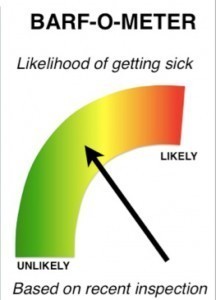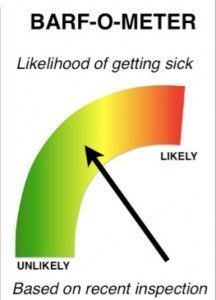Reprinted with permission by Food Safety Magazine
Joseph Corby, Gary Ades, Ph.D., Jeff Farrar, D.V.M., Ph.D., M.P.H., Barbara Cassens, Patrick Kennelly, Steve Mandernach, Stan Stromberg and Jessica Holthaus Badour write that in 1939, Connecticut Dairy and Food Commissioner E.G. Woodward was the vice president of the Association of Food and Drug Officials (AFDO) and expressed the following in the organization’s quarterly bulletin:
 “The greatest single program of work before the Association is to follow through with its efforts for uniformity in state legislation until this whole nation has an integrated system of similar Food, Drug, and Cosmetic Laws, interpreted, administered, and enforced in a single spirit of uniformity.”
“The greatest single program of work before the Association is to follow through with its efforts for uniformity in state legislation until this whole nation has an integrated system of similar Food, Drug, and Cosmetic Laws, interpreted, administered, and enforced in a single spirit of uniformity.”
Little did Commissioner Woodward know that his words would become the hallmark issue for AFDO and that the organization would formally issue its vision for an integrated food safety system (IFSS) that would be validated in 2011 with the passage of the Food Safety Modernization Act (FSMA).
A Bit of History
Since 1896, AFDO has fought for uniformity among federal and state regulators in a number of ways. The organization was a strong advocate of the 1906 Pure Food and Drug Act and the 1938 Food, Drug and Cosmetic Act and even sent its legislative committee to Washington to argue for passage of them.
Passage of the 1906 measure in Congress was not assured, but lobbying by the association was vocal and well funded. Some members of Congress opposed the bill as being unconstitutional. President Theodore Roosevelt, however, overcame lawmakers’ objections and signed the landmark law. He was also very much repulsed by slaughterhouse practices that were described in Upton Sinclair’s book The Jungle and signed the Meat Inspection Act that same year. The country now had statutes dedicated to protection against the adulteration of food and drugs.
In 1913, AFDO requested that the U.S. Food and Drug Administration (FDA) form an Office of State Cooperation that would later become the Division of Federal State Relations and eventually the FDA Office of Partnerships. Today, the Office of Partnerships is a key promoter of an IFSS and has a dedicated staff that works with state and local food safety managers to advance this cause.
In 1927, AFDO approved adoption of a Model Uniform Food Law, which provided a basic food law model for the states to consider adopting. This model law identified foundational authorities and powers that state programs needed for effective enforcement of food safety laws. This model law is still useful today, as FDA and states begin implementing produce safety requirements at fresh produce farms—an arena traditionally absent of inspection and governmental oversight.
 In 1937, a Tennessee drug company marketed a form of a new sulfa drug elixir, sulfanilamide. However, the solvent in this untested product was a highly toxic chemical analogue of antifreeze. Following the marketing of this product, more than 100 people would die, causing an enormous public outcry. The event resulted in the passage of the Food, Drug, and Cosmetic Act signed into law by President Franklin Roosevelt. The act completely overhauled the public health system and authorized FDA to demand evidence of safety for new drugs, to issue standards for food and to conduct inspections.
In 1937, a Tennessee drug company marketed a form of a new sulfa drug elixir, sulfanilamide. However, the solvent in this untested product was a highly toxic chemical analogue of antifreeze. Following the marketing of this product, more than 100 people would die, causing an enormous public outcry. The event resulted in the passage of the Food, Drug, and Cosmetic Act signed into law by President Franklin Roosevelt. The act completely overhauled the public health system and authorized FDA to demand evidence of safety for new drugs, to issue standards for food and to conduct inspections.
Another result of this tragic episode was the nationally coordinated effort by FDA and the states to track down any remaining sulfanilamide in the marketplace to prevent further deaths. This task was performed by all 239 FDA field officials and a multitude of state and local officials. This coordinated effort led to the retrieval of 234 of the 240 gallons of product believed to be marketed and was one of the first clear illustrations of what government agencies could accomplish by working closely together in a more integrated fashion.
Cooperative Programs
In 1968, reorganization of federal health programs placed FDA within the U.S. Public Health Service (PHS). The following year, FDA began administering sanitation programs for milk, shellfish, foodservice and interstate travel facilities. Their responsibilities in these programs were transferred from other units of PHS. Annual national conferences were developed in three program areas to bring together representatives from all levels of government, the food industry, academia and consumer organizations to address emerging food safety problems. The Conference for Food Protection for retail, National Conference on Interstate Milk Shipments for milk and Interstate Shellfish Sanitation Conference for shellfish all work toward developing science-based procedures and best practices the food regulatory agencies and industry follow.
These conferences represent a formal agreement between FDA and state and local regulatory entities. The model codes, ordinances, memorandums of understanding and related documents that guide the cooperative programs emerge from these conferences, and all efforts are conducted cooperatively.
FDA Partnerships and Contracts
An FDA partnership is a relationship in which the parties have close cooperation and share specified rights and responsibilities. FDA and the state and local agencies have developed numerous partnerships that do not necessarily require a contractual relationship but are anchored in common values, goals and responsibilities. A model “Integrated Partnership Agreement” was developed that involves all goals and activities between FDA and a state agency (including planning and operational coordination, food recall activities, information sharing, food sampling and analysis, and emergency response)—all within the single agreement.
 FDA contracts are much more formalized than partnerships and involve agreed-upon funding for services. Currently, FDA’s Office of Partnerships manages the various inspection contract programs with states. These contract programs benefit states by providing familiarity with federal requirements and more uniform enforcement of laws through cooperation and coordination with FDA. The inspection contract programs allow FDA to enlarge coverage of its Official Establishment Inventory of food processing facilities and to redirect resources to other priorities.
FDA contracts are much more formalized than partnerships and involve agreed-upon funding for services. Currently, FDA’s Office of Partnerships manages the various inspection contract programs with states. These contract programs benefit states by providing familiarity with federal requirements and more uniform enforcement of laws through cooperation and coordination with FDA. The inspection contract programs allow FDA to enlarge coverage of its Official Establishment Inventory of food processing facilities and to redirect resources to other priorities.
The inspection contract programs include food safety, feed (including bovine spongiform encephalopathy testing), tissue residue, milk, drugs, the Mammography Quality Standards Act of 1992 and medical devices. These programs exist in more than 145 state regulatory agencies. They allow FDA to acquire data for more than 4 million samples collected and 25,000 inspections conducted at the state level.
Vision of an Integrated Food Safety System
AFDO soon began to envision and then promote a federal/state relationship that was more permanent and substantive than partnerships and contracts could ever be. It was the beginning of the real quest for an IFSS.
Dr. Dan Smyly was the food safety program manager for Florida’s Department of Agriculture & Consumer Services and AFDO president in 1997–98. Smyly first initiated the concept of a vertically integrated national system during a presentation he gave at the Regulatory Affairs Professional Society’s annual conference on September 9, 1997. During his presentation, he said the following:
“With our dwindling resources, we have very few options except to work smarter together, pool our resources and work more cooperatively in the regulation of foods in this country.
I also believe that all major stakeholders in the federal, state, industry and regulatory interface must continue to work towards the development of what I call a truly vertically integrated national food regulatory system.
All inspections, laboratory testing and enforcement activities at all levels of government must be captured in an overall focused national system. No level of funding increase will give sufficient resources for the federal government to effectively regulate the hundreds of thousands of manufacturing, processing and retail establishments.
For us to have a truly vertically integrated national food regulatory system, we must involve President Clinton, Congress, governors, state legislators and other state executive leaders to provide adequate resources at all levels of government to implement the national system.”
Smyly presented additional speeches on the integration concept at the U.S. Department of Agriculture (USDA)’s annual federal/state conference on food safety in November 1997 and a regulator panel discussion at the National Academy of Sciences (NAS) Committee to Ensure Safe Food from Production to Consumption in April 1998.
 During these presentations, Smyly presented AFDO’s recommendation to form a select group of key members from pertinent stakeholder groups to craft a blueprint for a future national IFSS that would encompass all levels of government. He concluded his remarks at the NAS stating, “All that remains for us to do is to make the commitment.”
During these presentations, Smyly presented AFDO’s recommendation to form a select group of key members from pertinent stakeholder groups to craft a blueprint for a future national IFSS that would encompass all levels of government. He concluded his remarks at the NAS stating, “All that remains for us to do is to make the commitment.”
This marked the beginning of a concentrated effort to develop a national IFSS. It started during President Bill Clinton’s Food Safety Initiative, which was designed to strengthen coordination and improve efficiency between FDA, USDA, the U.S. Centers for Disease Control and Prevention (CDC) and the U.S. Environmental Protection Agency (EPA). This initiative resulted in the formation of a new intergovernmental group dedicated to working in a more coordinated fashion with state and local responders to foodborne illness. It included an expansion of Hazard Analysis and Critical Control Points principles, increased food safety research, the development of an early national warning system and a campaign for food safety education. Most importantly, it gave birth to the National Food Safety System (NFSS) project.
National Food Safety System Project
The commitment that Smyly recommended came to pass with the development of the NFSS project. Through this project, FDA and USDA Food Safety and Inspection Service (FSIS) actively began engaging state and local food safety counterparts. CDC and EPA also began to explore new approaches for partnering on food protection. In September 1998, a meeting was held for food safety officials from FDA, USDA-FSIS and CDC along with the food safety agencies from all 50 states. This historic meeting produced a broad consensus on the need to meet challenges together to integrate food safety activities at all levels of government. Attendees discussed their visions of a successful food safety system, identified obstacles to achieving that vision and proposed action items to remove those barriers.
NFSS work groups were formed, consisting of individuals from the federal agencies as well as state and local officials. Under the guidance of a multi-agency steering committee, these work groups were charged with generating ideas to promote an IFSS. There were five initial NFSS work groups:
Roles and Responsibilities
Outbreak Coordination and Investigation
Laboratory Operations and Coordination
Information Sharing and Data Collection
National Uniform Criteria
All participants of the NFSS project agreed that an IFSS should have the following properties: a common vision, national uniform standards, uniform inspections and enforcement, uniform laboratory practices, adequate training, enhanced communications and federal oversight. In 1999, the NFSS work groups proposed innovative ideas and provided assistance on a number of federal activities, and by 2001, a number of projects had been initiated and/or completed. Some of the major accomplishments and integration concepts (which continue to this day) the work groups achieved include the following:
Agreement that uniform national standards should be established for electronic exchange of laboratory, inspection and surveillance data
Development of standards for food sampling, laboratory testing and reporting
Identification of the critical importance of accrediting food testing laboratories and of sharing testing data
Development of a set of guidelines for the coordination of multi-state foodborne illness outbreaks
Provision of an oversight model for FDA to audit state inspections conducted under partnerships and contracts
Drafting of a model partnership agreement for FDA to establish with state food safety agencies
Development of a conceptual design for a “virtual” National Food Safety Training Center (also known as “Food Safety University”)
Development of a draft set of uniform criteria that could be used to evaluate the capacity and performance of local, state or federal regulatory programs for retail foods, seafood and manufactured foods regulatory programs
Proposal of the establishment of state food safety task forces
Many of these ideas have become a reality today through the presence of electronic exchange and information-sharing systems, lab accreditation efforts, uniform inspection and investigation guidelines, a model IFSS partnership program, the establishment of the Office of Regulatory Affairs University with online and face-to-face training, advancement of regulatory program standards and implementation of food safety task forces in multiple states across the nation. All of these prominent and beneficial efforts owe their existence to the ideas created through the NFSS project.
Unfortunately, federal funding for the NFSS project began to decrease and was lost by 2002. All the work that had gone into this effort was thought to have been wasted. It was too good an idea, however, and would soon be illustrated in the new visions and ideas for improving the nation’s food safety system—all of which would recognize the need for closer collaboration between local, state and federal government agencies.
FDA Food Protection Plan
 During the administration of George W. Bush, the FDA Food Protection Plan was developed to implement a strategy of prevention, intervention and response along every step in the food supply chain. The plan complemented FDA’s Import Safety Action Plan to improve the safety of all imported products, and the two plans were conceived to improve the food safety efforts by the public and private sectors.
During the administration of George W. Bush, the FDA Food Protection Plan was developed to implement a strategy of prevention, intervention and response along every step in the food supply chain. The plan complemented FDA’s Import Safety Action Plan to improve the safety of all imported products, and the two plans were conceived to improve the food safety efforts by the public and private sectors.
To fortify prevention efforts against food contamination, FDA planned to strengthen support of the food industry’s efforts to build safety into products at the level of manufacturing. For its intervention strategy, FDA would emphasize risk-based inspection and sampling at the manufacturer/processor level. For response, FDA recognized the critical importance of clear communication channels with its own personnel, the public, other government agencies and the food industry. This clear recognition of state and local agencies stems from their status as “boots on the ground” first responders to foodborne illness and food emergencies.
Food Safety Modernization Act
FSMA was signed into law by President Barack Obama on January 4, 2011. The goal of FSMA is to better protect public health by strengthening the food safety system through the prevention of food safety problems (rather than reacting to problems after they occur). FSMA provides FDA with new enforcement authority designed to achieve higher rates of compliance with prevention and risk-based food safety standards. It also gives FDA important new tools to hold imported foods to the same standards as domestic foods. For the first time, FSMA incorporates into federal law a requirement that FDA build an integrated national food safety system in partnership with state and local authorities.
An IFSS will not happen overnight, and FDA has created a process for getting this work done. However, the funding FDA receives each year will affect how quickly the organization is able to implement FSMA requirements and develop the integrated system necessary to meet these challenges.
The formal system to be built through FSMA requires commitment and collaboration with other government agencies, both domestic and foreign. In doing so, FSMA explicitly recognizes that all food safety agencies need to work in an integrated manner to achieve improved public health goals.
Domestically, state and local capacity building is key to a successful implementation strategy. FSMA provides FDA with a multi-year-grant funding mechanism to facilitate investments in state and local food protection and public health efforts to more efficiently achieve national food safety goals together.
Partnership for Food Protection
The Partnership for Food Protection (PFP), established in 2009, is a group of dedicated professionals from federal, state and local governments with roles in protecting the food supply and public health. Members have expertise in food, feed, epidemiology, laboratory, animal health, environment and public health, and have been charged with developing and implementing a national IFSS through five critical components:
Communicating the vision, goals and expectations of an IFSS
Gaining industry compliance
Emergency response and recalls
Laboratory and regulatory science
Training and certification
The PFP recognizes that factors such as work planning, communication and outreach, national standards, information technology, best practices and metrics must be addressed within each of these critical components, as they are developing actions for each based on available funding and resources.
Following a 50-state workshop in 2012, the PFP Governing Council was formed with representatives from local and state health and agricultural departments, an associate executive and key FDA centers and offices to guide the work of the PFP and set strategic priorities. It is not a policy-setting body.
A strategic plan, released in 2014, established a direction and plans for developing an IFSS through the PFP, focusing primarily on integrating functions related to domestically manufactured human and animal food. The plan will be reviewed every 2 years in detail to allow for adjustments based on recent accomplishments and changes in the regulatory landscape.
The plan also provides guidance and sets objectives for seven PFP work groups that contain numerous members from federal, state and local government agencies. The current work groups and their charges are the following:
Outreach: Communicate the benefits of an IFSS and the role and accomplishments of the PFP through newsletters, presentations on PFP activities at many association meetings and conferences, and the PFP website
Work Planning & Inspections: Develop coordinated approaches for planning and conducting industry oversight activities related to work planning, inspections and sampling to promote compliance with applicable food safety laws and regulations, and to protect public health
Compliance & Enforcement: Develop coordinated approaches for planning and conducting industry oversight and enforcement activities to promote compliance with applicable food safety laws and regulations, and to protect public health
Surveillance, Response & Postresponse: Strengthen and enable faster and more effective surveillance, response and postresponse activities to food safety efforts through coordination among strategic partners
Laboratory Science: Promote consistency and facilitate information sharing by establishing and utilizing national laboratory best practices
Training & Certification: Provide input into the development of standard curricula and certification programs that promote consistency and competence among the IFSS workforce
Information Technology: Promote data standards to improve the ability to share information electronically among strategic partners
While the activities of the PFP have come primarily from government, all other stakeholders are engaged. This is a critical piece that was overlooked in the past but is very much part of the seamless system that is desired. Industry, academia and consumers are continually advised of IFSS efforts and activities to ensure transparency and to seek feedback. Two early successes of the IFSS are the Rapid Response Teams and the Manufactured Food Regulatory Program Alliance.
Rapid Response Teams
Food Protection Rapid Response Teams (RRTs) conduct integrated, multi-agency responses to food and feed emergencies in various states across the nation. RRTs were developed through multi-year cooperative agreements between FDA and state food regulatory partners. There are currently 18 RRTs within the program, with additional states developing RRTs outside of cooperative agreements (i.e., without federal funding support).
RRTs engage partners across disciplines and jurisdictions to build core capabilities and explore innovative approaches to response. The RRTs vary from state to state in accordance with differences in government structures, geographies, laws, resources, etc. They activate in response to food emergencies, drawing on the resources and partnerships developed through this project to accomplish responses characterized by improvements in areas such as interagency communication, established plans and procedures, and jointly trained and exercised staff.
Recent RRT responses to emergencies exhibit the benefits of strengthened collaboration and capabilities on the efficiency and effectiveness of their responses.
 RRTs have worked to align preparedness, prevention, surveillance, response and mitigation efforts of the federal, state and local regulatory agencies within their states, including epidemiological and laboratory partners. RRTs also work closely with the components of federal agencies responsible for coordinating the national regulatory or public health response for multi-state events. For example, during multi-state foodborne outbreaks, RRTs work with their FDA district office to receive updates on the national investigation and share the RRTs’ action plans and accomplishments with FDA’s Coordinated Outbreak Response and Evaluation Network to ensure individual RRTs’ response activities are aligned with the national response. Similarly, state epidemiological partners of the RRTs work with the CDC’s Outbreak Response and Prevention Branch to receive and share information about the epidemiological investigation within the state and nationwide.
RRTs have worked to align preparedness, prevention, surveillance, response and mitigation efforts of the federal, state and local regulatory agencies within their states, including epidemiological and laboratory partners. RRTs also work closely with the components of federal agencies responsible for coordinating the national regulatory or public health response for multi-state events. For example, during multi-state foodborne outbreaks, RRTs work with their FDA district office to receive updates on the national investigation and share the RRTs’ action plans and accomplishments with FDA’s Coordinated Outbreak Response and Evaluation Network to ensure individual RRTs’ response activities are aligned with the national response. Similarly, state epidemiological partners of the RRTs work with the CDC’s Outbreak Response and Prevention Branch to receive and share information about the epidemiological investigation within the state and nationwide.
Manufactured Food Regulatory Program Alliance
The Manufactured Food Regulatory Program Alliance (MFRPA) was formed under a cooperative agreement between FDA and AFDO. This alliance consists of state manufactured food regulatory program managers from around the country with representatives from every state who engage in FDA contract work for inspection of manufactured food facilities. The alliance works with FDA to:
Establish a network of state manufactured food program managers
Conduct surveys of state/local/tribal manufactured foods programs
Identify and track state laws and regulations
Provide task-oriented guidelines as needed
Identify and support pilot programs in states as needed to support implementation of MFRPA
Identify training and outreach that is needed
Update the Directory of State and Local Officials (DSLO)
Establish operational partnerships that assist in the capacity building of state and local agencies
Establish and implement strategies for improving state and local food safety efforts
AFDO administers an annual national meeting that brings together all state program managers along with FDA district and Office of Partnership officials. The meeting is designed to assist state food safety programs in meeting program standards and advancing a more uniform IFSS. The alliance has been extremely successful in meeting the above-listed objectives.
The DSLO is considered the primary contact mechanism for an integrated system. The DSLO identifies state officials’ contact information, which can be searched by job function, such as boards of pharmacy, consumer protection, laboratory, epidemiology, retail food, manufactured food, shellfish and dairy. The DSLO is updated twice a year and includes a host of other contact links. This directory is available to everyone via AFDO’s and FDA’s websites. It can also be accessed via mobile devices.
In addition to the state contact information, the DSLO includes links to local health officials, tribal jurisdictions, AFDO’s state food emergency contact list, state feed control officials, FDA district offices, the FDA Import Operations office and FSIS field offices.
The alliance has worked with AFDO in developing and distributing guidance documents associated with the inspection of fresh produce, food transportation best practices, imported foods, risk-based modeling and cottage foods.
The alliance formed an important operational partnership that continues with food laboratory managers from the federal and state arenas to help labs meet regulatory program standards associated with the requirement of laboratory support. The alliance now collaborates with food laboratory managers on issues related to sampling and analysis of manufactured food.
What Will an Integrated Food Safety System Look Like?
FDA has stressed that an IFSS is a critical element in taking a preventive approach to food safety. However, FDA stresses that building an integrated system presents some unique and colossal challenges.
One problem with integration is that the preventive efforts of every agency must be sustainable. It is estimated that approximately 14 federal agencies, 75 state agencies and 2,800 local agencies are involved in food safety in this country. When considering these numbers, it is not hard to imagine that the task of integrating all of these government entities is impracticable. Even while FDA’s implementation strategy for FSMA is to build an IFSS, some states debate this strategy, as it is based on reliance on state-level inspections, which already have limited and often diminishing resources. This may be one of the biggest challenges for an IFSS.
There is a commonality among all of these government entities, however, and that is the strong and passionate will to improve. This driving force will allow us all to advance the idea of integration that was formally presented to FDA almost two decades ago.
But changing our nation’s food safety system will take time. We need to change attitudes and culture—things many have said cannot be achieved with government. It will require trust and mutual reliance between all government entities with the clear understanding that independence in food safety efforts is a thing of the past.
Enormous strides have been taken in advancing an IFSS, from the achievements of PFP to the support structure of the MFRPA to the acceptance and implementation of regulatory program standards to the marked improvements made in the response areas of foodborne illness investigation and food recalls. While government can boast about improvements, officials still recognize there is much more to do.
Industry and consumers have a huge stake in this too, and they have legitimate demands for what an IFSS should be.
If one were to envision our system fully integrated in the future, it most likely would contain the following elements:
An increased ability to assess potential risks at domestic and foreign food facilities
More consistent coverage facilities across the entire food supply chain
Greater food surveillance through integration of food facility inspection information
Improved rapid response capacity and efficiency
Uniform inspection and investigation activities
Application at all government levels of equivalent performance standards
Fully trained and competent inspection staff
The free sharing of inspection and analytic data
The application of more strategic inspections
Credible enforcement at all levels
National uniformity
Going forward, it is important that all stakeholders stay informed so that we may all better understand the current integration efforts and can all work together to help identify specific practices to improve integration activities for all stakeholders.
Integration was a great idea in 1939 when Commissioner Woodward expressed his thoughts. It was a great idea in 1997 when AFDO President Smyly formally expressed AFDO’s position. It is a great idea today, one that is experiencing many successes, and it appears to be the best way for us all to meet the challenges of FSMA and reforming our nation’s food safety system.
 Strangely absent in such debate is the state of Minnesota, which is often praised for its skill and speed investigating outbreaks of foodborne illness.
Strangely absent in such debate is the state of Minnesota, which is often praised for its skill and speed investigating outbreaks of foodborne illness. Peter Oshiro, manager of Hawaii’s food safety inspection program, said “We’re taking transparency to an entirely new level,” adding that, “Information from the inspection reports empowers consumers and informs their choices. … This should be a great catalyst for the industry to improve their food safety practices and make internal quality control a priority before our inspections.”
Peter Oshiro, manager of Hawaii’s food safety inspection program, said “We’re taking transparency to an entirely new level,” adding that, “Information from the inspection reports empowers consumers and informs their choices. … This should be a great catalyst for the industry to improve their food safety practices and make internal quality control a priority before our inspections.”

















